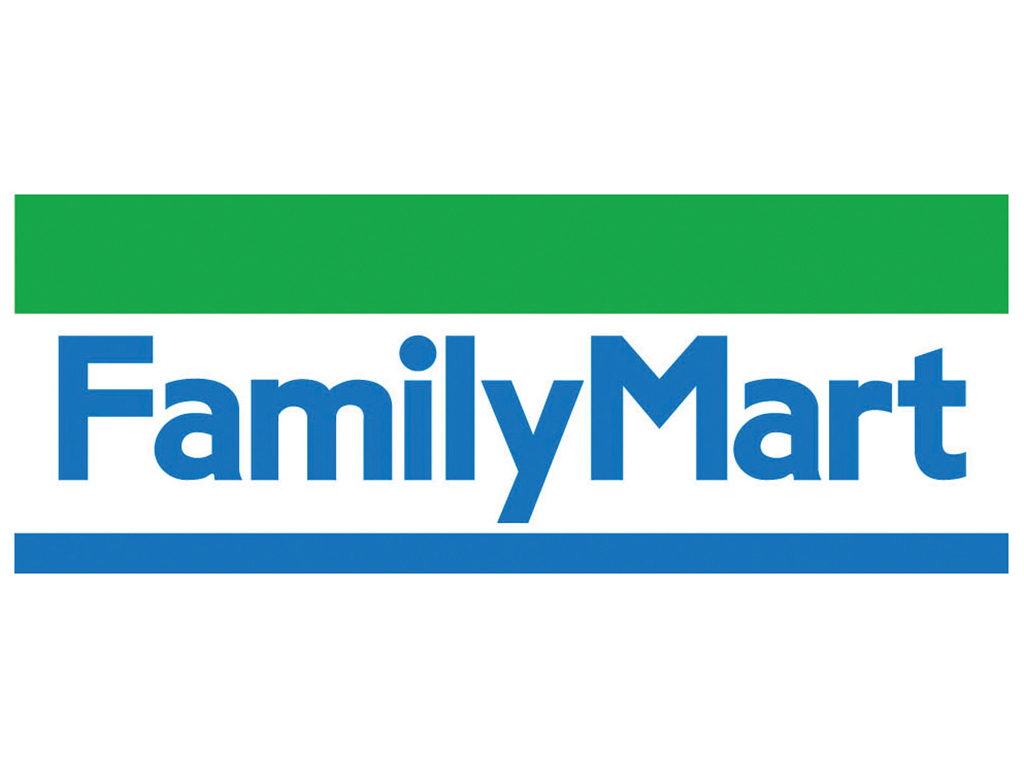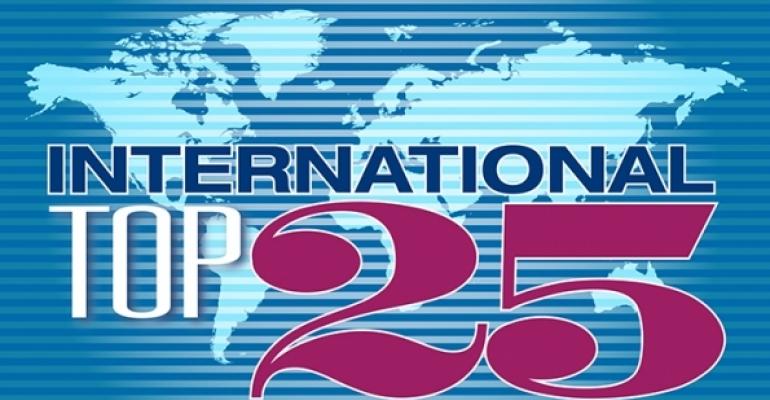Asia-Pacific operators within the International Top 25 chains built on their dominant shares of the group’s worldwide receipts and locations in 2014, Euromonitor International research shows.
“Asia-Pacific, led by China, [is] now the world’s largest restaurant market by some distance,” Michael Schaefer of research firm Euromonitor International, said of the region that is home to the NRN International Top 25’s leading group of chains.
NRN’s International Top 25 chains roster ranks chains based outside the United States and Canada by sales, using core data from London-based Euromonitor, where Schaefer heads up beverages and foodservice research.
The International Top 25 chains had aggregate 2014 worldwide systemwide sales of $59.9 billion. That amount represented growth of 6.8 percent from 2013, when sales rose by a larger 8.3 percent to $56.0 billion.
NRN joins with Euromonitor annually to exclusively present data and analysis for leading international brands to help provide insights and context to U.S. restaurant systems looking to expand abroad.
Euromonitor said the International Top 25 chains saw their 2014 year-end total units rise by a slower 4.7 percent to 122,282, after climbing 5.3 percent to 116,845, the year before.
Though 25 chains headquartered in three regions — Asia-Pacific, Middle East-Africa and Western Europe — made the 2015 list, 16 brands, or 64 percent, had Asia-Pacific as a home market. As a group, the Asia-Pacific chains generated disproportionately large shares of sales and units.
Bolstered by International Top 25 No. 1-ranked 7-Eleven, the Asia-Pacific contingent accounted for $47.4 billion in sales in 2014 or 79.2 percent of the total roster’s sales output, and 106,963 units, or 87.5 percent, of its aggregate locations.
In terms of aggregate Asia-Pacific results, those operators grew their 2014 total sales and units by 7.3 percent and 5.2 percent, respectively, reflecting a deceleration from 9.3 percent sales growth and 6.2 percent unit expansion in 2013.
Euromonitor’s Schaefer estimated 2014 foodservice sales for the entire Asia-Pacific region, including all independent and chain restaurants, of $1.1 trillion, excluding results from institutional, non-public foodservice like prisons and corporate cafeterias. In contrast, Euromonitor estimated 2014 U.S.-Canada foodservice sales of $556.3 billion.
China continues to lead the Asia-Pacific region. Schaefer said despite signs of a slow down in foodservice sales expansion, the country is expected “to remain one of the fastest-growing Asian markets over the next five years.”
“Prospects across the region remain bright, as local dining traditions and strong income growth fuel expansion [with] local players — chains and independents — leading the way, as upwardly-mobile Asian consumers seek to combine the sophisticated and the familiar,” said Schaefer.
In a five-year forecast, Euromonitor expects Asia-Pacific’s foodservice sales to rise by 38.7 percent to $1.5 trillion by 2019, and the U.S.-Canada total to rise by 24.3 percent to $691.4 billion.
As part of those forecasts, the research firm predicts the chain-restaurant component in Asia-Pacific to increase by 34.3 percent to $283.6 billion annually, between 2014 and 2019.
That forecast would make Asia-Pacific the second largest incremental growth market in the world for multi-unit operators behind the U.S.-Canada, where Euromonitor anticipates a 25.7-percent hike in chain sales by 2019 to $369.6 billion annually.
Latin America and Western Europe are the two next largest potential incremental growth regions for multi-unit operators among those tracked by the research expert for NRN.
Euromonitor anticipated chain-sales growth of 114.3 percent in Latin America to $91.0 billion annually by 2019, and a 22.6 percent increase in Western Europe to $134.2 billion annually by 2019.
The Middle East-Africa and Eastern Europe regions are expected to have smaller potential incremental chain-sales growth. Middle East-Africa is expected to grow such sales by $13.2 billion between 2014 and 2019 to $30.5 billion annually, and Eastern Europe is expected to grow them by $7.6 billion to $21.7 billion.
Tracking chains in Asia, Europe
Within the dominant International 25 Asia-Pacific group, the dominant chain by far is Tokyo-based convenience-store operator 7-Eleven. 7-Eleven had $20.7 billion in estimated 2014 worldwide foodservice sales and 54,578 units, which represented more than a third of International Top 25 aggregate 2014 sales.
Though, as a group, the eight Western Europe-based chains — with 2014 total sales of $11.1 billion and total units of 14,230 — could not match the Asia-Pacific systems’ aggregate sales or units, they slightly outpaced the latter group in average 2014 growth in system sales, 4.9 percent to 4.8 percent.
The Western Europe operators improved their growth in aggregate sales from 4.7 percent in 2013 to 4.9 percent in 2014, while reversing a loss in units of 0.5 percent in 2013 with a 0.5-percent gain in 2014.
According to Euromonitor, International Top 25 companies had aggregate 2014 system sales of $70.1 billion, which was up 5.9 percent from 2013, when their sales increased by 8.4 percent to $66.2 billion.Euromonitor, in reporting or estimating company sales, excludes receipts from concepts franchised or licensed from others.
It said the 17 Asia-Pacific-based companies had aggregate 2014 sales of $55.9 billion, or 79.7-percent of the Top 25’s total, marking year-over-year growth of 6.8 percent, which was down from expansion of 9.7 percent a year earlier. The group’s average sales growth was 4.5 percent in 2014, down from 2013’s 7.9-percent average.
International Top 25 chains had average growth in systemwide sales of 4.8 percent in 2014, compared with an average increase of 5.5 percent in 2013.
 C-Store operator and No. 3-ranked chain FamilyMart of Tokyo led all systems in 2014 sales growth, with a 17-percent bump in its foodservice topline, to $4.4 billion, partially on the strength aggressive new-store development. Taiwan-based Dicos, the No. 7 chain, a purveyor of fried chicken and other Western-style foods, had the second highest 2014 sales growth, at 15.0 percent, to $1.5 billion.
C-Store operator and No. 3-ranked chain FamilyMart of Tokyo led all systems in 2014 sales growth, with a 17-percent bump in its foodservice topline, to $4.4 billion, partially on the strength aggressive new-store development. Taiwan-based Dicos, the No. 7 chain, a purveyor of fried chicken and other Western-style foods, had the second highest 2014 sales growth, at 15.0 percent, to $1.5 billion.
Despite FamilyMart’s impressive sales growth, officials of its parent, FamilyMart Co. Ltd., the No. 3-ranked International Top 25 company, last month announced that in 2016 it would merge with Uny Group Holdings Co., operator of Circle K and Sunkus chains. They said the stock deal and business combination to leapfrog larger segment nemesis Lawson — the No. 2 Top 25 chain and company — was needed “to survive competition.”
Strategic acquisitions are on the mind of other International Top 25 players, as well.
In October, Jollibee Foods Corp. of Pasig City, Philippines, the No. 9 ranked company, revealed that it had purchased a 40-percent stake in the rapidly expanding U.S.-based, fast-casual Smashburger chain.
In late September, partially in a bid to gain ground on France burger market leader McDonald’s, Groupe Bertrand, the majority shareholder in Burger King France, Burger King’s master franchisee in that country, signed an offer letter to acquire for an undisclosed amount the approximately 500-unit Quick limited-service chain from No. 18 International Top 25 company Quick Group of La Plaine Saint-Denis, France.
And in December 2014, in a move that helped it inch up from No. 14 in 2013 to No. 13 in 2014, Colowide Co. Ltd., of Yokohama, Japan, acquired Kappa Create Holdings Co. Ltd., parent of the Kappa Zushi chain.
Contact Alan J. Liddle at [email protected].
Follow him on Twitter: @AJ_NRN

